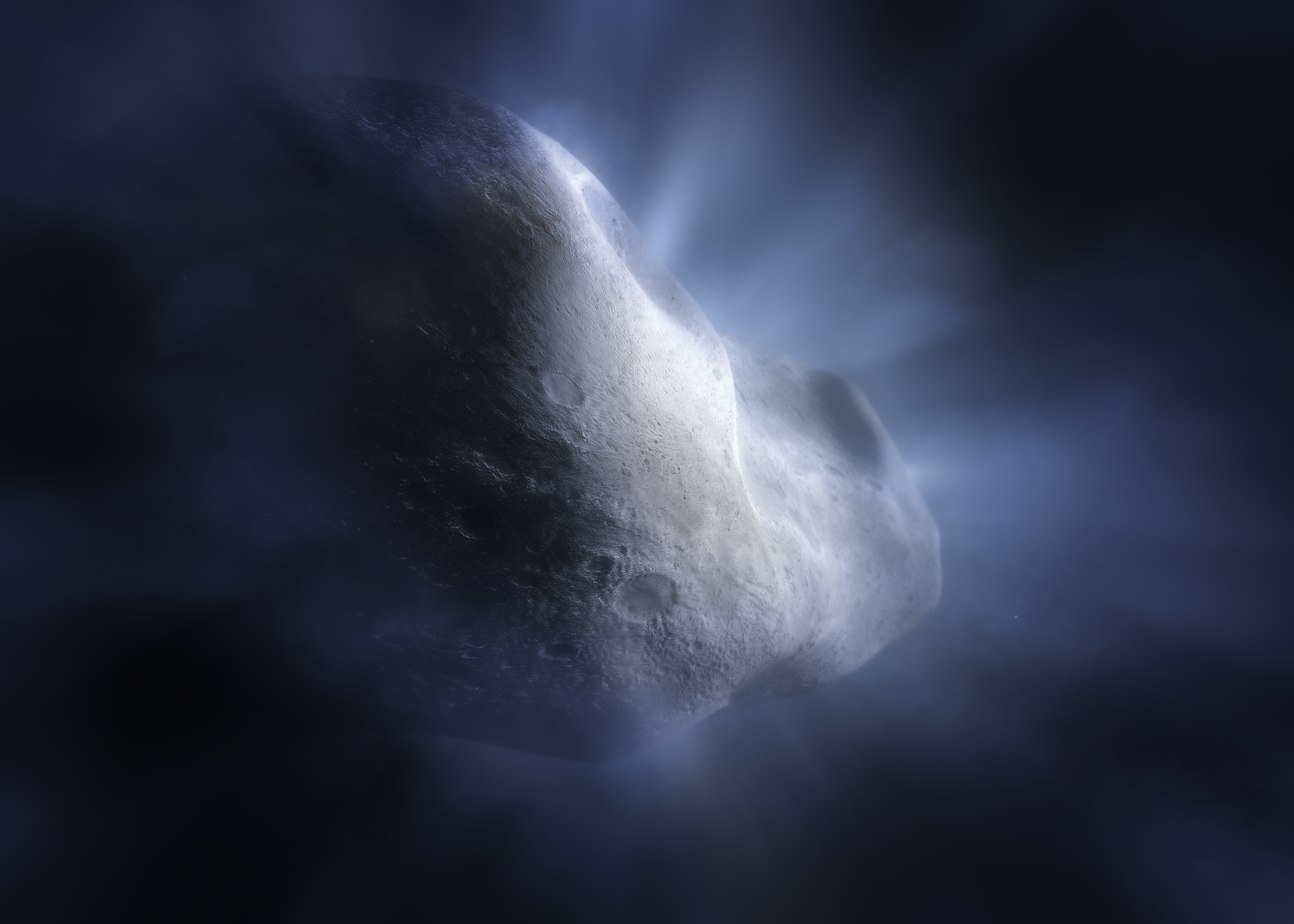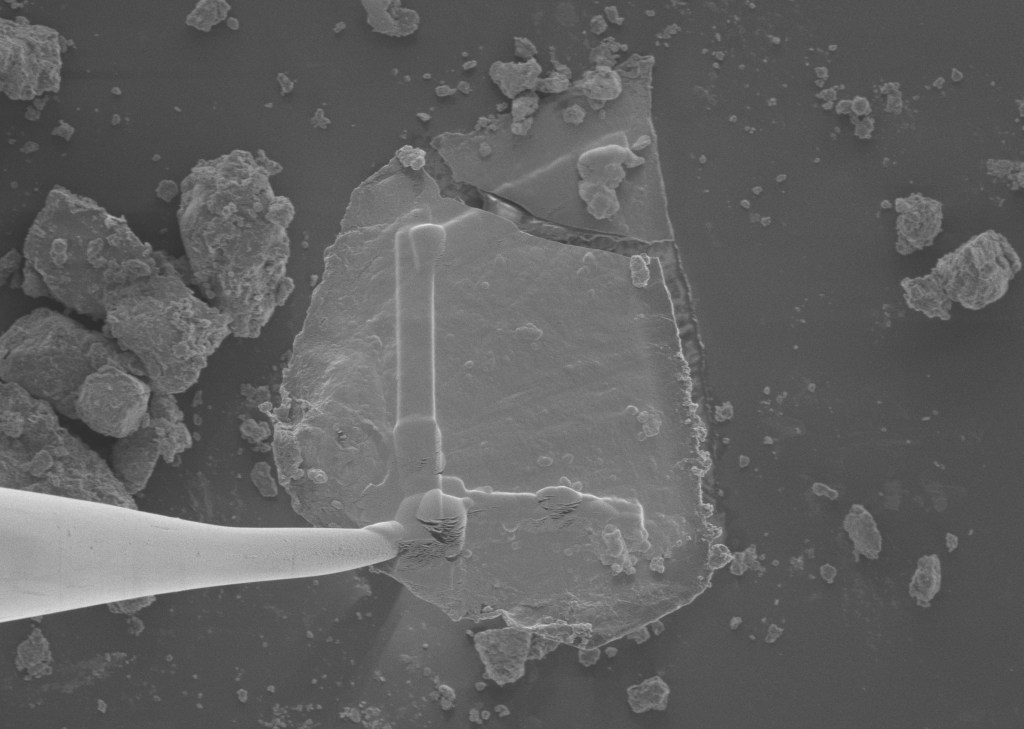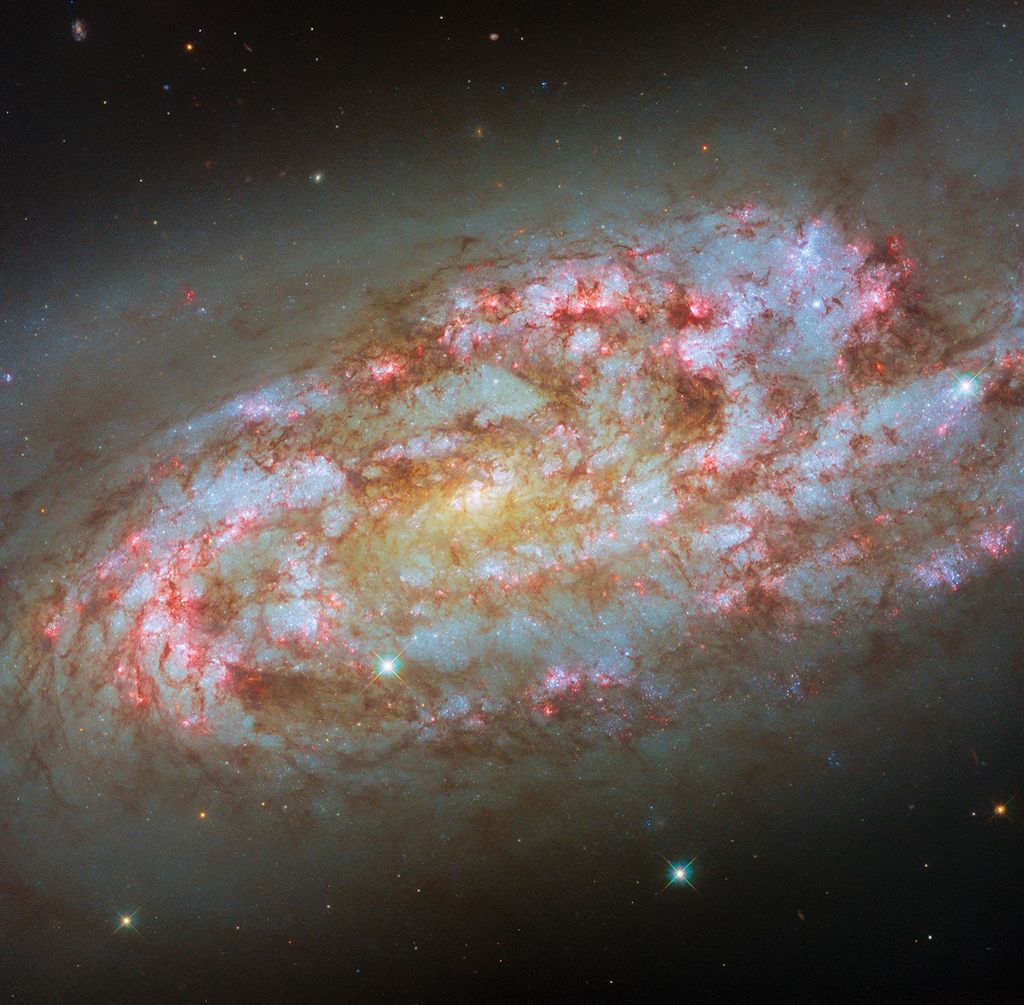1 min read
Comet 238P/Read (NIRCam Compass Image)

Image of Comet 238P/Read captured by the Webb Telescope’s NIRCam (Near-Infrared Camera), with compass arrows, scale bar, and color key for reference.
The north and east compass arrows show the orientation of the image on the sky. Note that the relationship between north and east on the sky (as seen from below) is flipped relative to direction arrows on a map of the ground (as seen from above). A scale bar is labeled 3,000 kilometers and 2,000 miles.
This image shows near-infrared wavelengths of light that have been translated into visible-light colors. The color key shows the filter used when collecting the light.
About the Object
- DistanceDistanceThe physical distance from Earth to the astronomical object. Distances within our solar system are usually measured in Astronomical Units (AU). Distances between stars are usually measured in light-years. Interstellar distances can also be measured in parsecs.Comet Read was 2.0897 au from JWST at the time of observation (about 300 million kilometers).
About the Data
- Data DescriptionData DescriptionProposal: A description of the observations, their scientific justification, and the links to the data available in the science archive.
Science Team: The astronomers who planned the observations and analyzed the data. "PI" refers to the Principal Investigator.This image was created with Webb data from proposal: 1252 (M. Kelley)
- InstrumentInstrumentThe science instrument used to produce the data.NIRCam
- Exposure DatesExposure DatesThe date(s) that the telescope made its observations and the total exposure time.8 September 2022
- FiltersFiltersThe camera filters that were used in the science observations.F200W
- Object NameObject NameA name or catalog number that astronomers use to identify an astronomical object.Comet 238P/Read, P/2005 U1
- Object DescriptionObject DescriptionThe type of astronomical object.Main-belt comet
- Release DateMay 15, 2023
- Science ReleaseNASA’s Webb Finds Water, and a New Mystery, in Rare Main Belt Comet
- CreditImage: NASA, ESA, CSA, Mike Kelley; Image Processing: Henry Hsieh (PSI), Alyssa Pagan (STScI)

This image is acquired by the NIRCam instrument on the James Webb Space Telescope. The color results from assigning a blue hue to a monochromatic (grayscale) image.
Related Images & Videos

Artist's Concept of Comet 238P/Read
This illustration of Comet 238P/Read shows the main belt comet sublimating—its water ice vaporizing as its orbit approaches the Sun. This is significant, as the sublimation is what distinguishes comets from asteroids, creating their distinctive tail and hazy halo, or coma. It is...

Comet 238P/Read (NIRCam Image)
This image of Comet 238P/Read was captured by the NIRCam (Near-Infrared Camera) instrument on NASA’s James Webb Space Telescope on September 8, 2022. It displays the hazy halo, called the coma, and tail that are characteristic of comets, as opposed to asteroids. The dusty coma...

Comet Spectra Comparison
This graphic presentation of spectral data highlights a key similarity and difference between observations of Comet 238P/Read by the NIRSpec (Near-Infrared Spectrograph) instrument on NASA’s James Webb Space Telescope in 2022 and observations of Comet 103P/Hartley 2 by NASA’s...
Share
Details
Laura Betz
NASA’s Goddard Space Flight Center
Greenbelt, Maryland
laura.e.betz@nasa.gov
NASA, ESA, CSA, Mike Kelley
Henry Hsieh (PSI), Alyssa Pagan (STScI)































